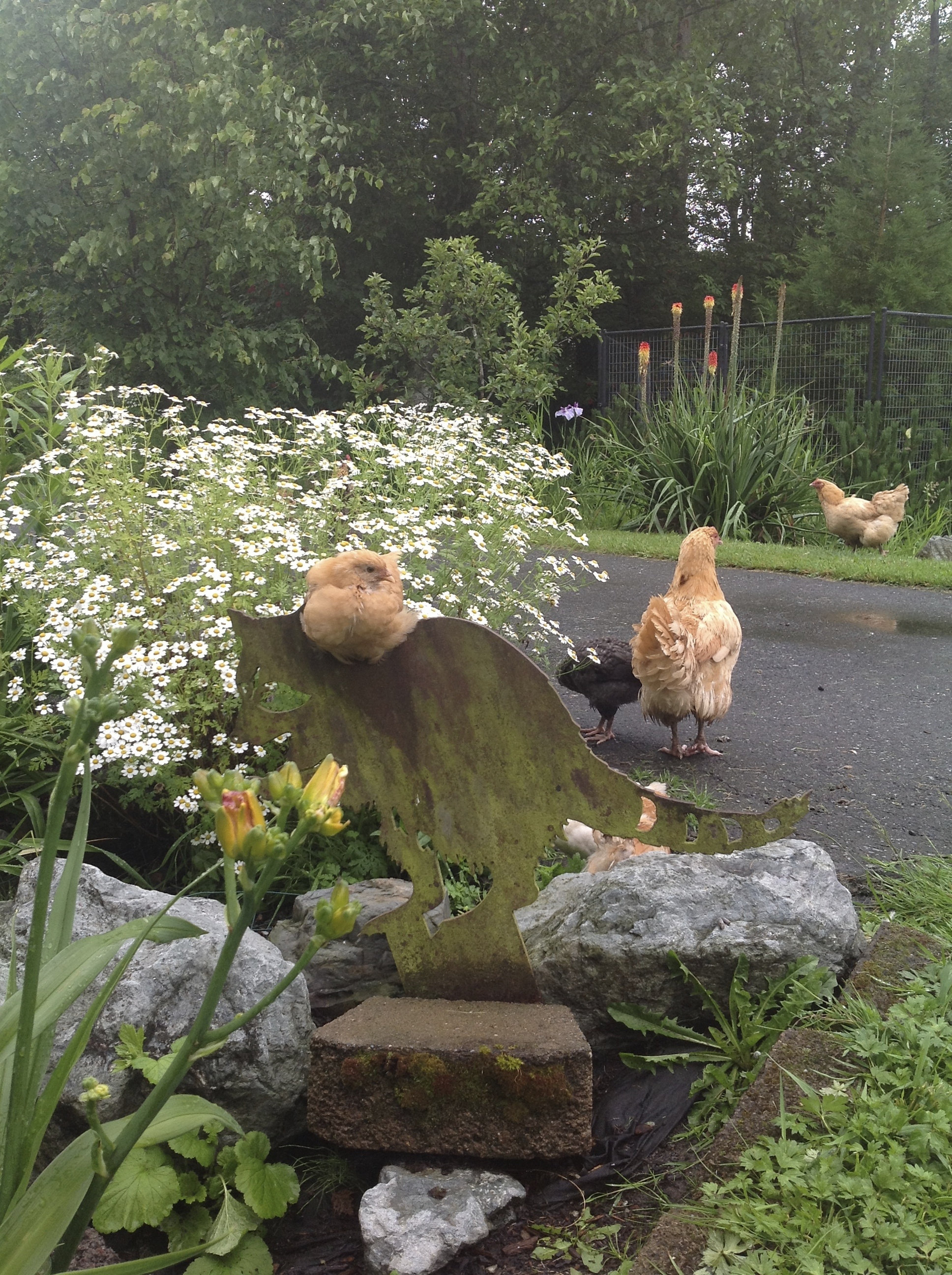Your cart is currently empty!
Category: Purchasing Chickens
-
Shirohana-mame – White Flower Beans
This is one bean you probably won’t find in your store. The white beans are huge and delicious. Called Shirohana Mame 白花豆 in Japan, the name means White Flower Bean. The beans get that name from the beautiful white flowers of the bean plant.
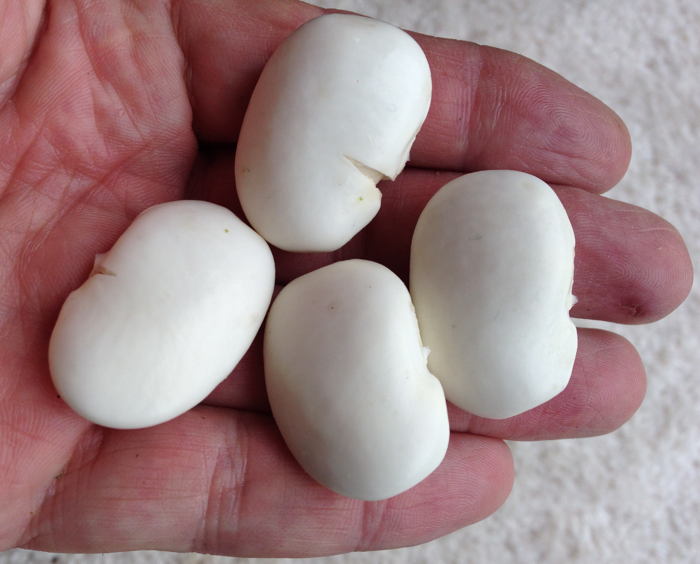

I’ve been growing this bean for a number of years, and this year I am planting 3,000 of them. I may even have some left over this fall if you would like to try them. The beans are a runner bean, Phaseolus cockiness, and grow on long vines. They are originally from Central America. In Japan they are cultivated where summers are cool in the mountain valleys of Nagano, Gifu, Tohoku and Hokkaido.They aren’t a bean whose cultivation can be mechanized, which means they require a lot of hands-on work to grow. You have to grow them on poles and pick them by hand. This isn’t the type of food normal food channels want to deal with. So you’re left to find small farmers growing them with a lot of love. I don’t know of anyone in the US growing them on a large scale. By the time I have my 3,000 beans growing, I may have the largest Shirohana Mame field in the country. I’ll let you know this fall how mine did.
- 花豆 ~ 豆種協会
- 玉ねぎ 白花豆 北海道農業 『森谷ファーム』
- 白豆きんとん
- 白花豆の甘煮
- Shirohana Mame ~ Kitazawa Seed Company
-
This Is Chicken?
The variety of meat chicken can provide is truly remarkable. Below is the leg and thigh meat of a roasted, fully grown rooster. The flavor and texture is very similar to a mild goat roast. If you closed your eyes and ate this rich meat, you would have no idea it was chicken.
Gina Bisco in her article Rediscovering Traditional Meats from Historic Chicken Breeds, describes the traditional chicken meat classes, broiler, fryer, roaster and fowl, which were used until the 1940s to describe the various types of chicken meat.

This is chicken? Up until the 1940s, the age at which a chicken was butchered determined its meat class. These classes are no longer used as modern chicken farming has dramatically speeded up the rate at which commercial chickens grow. Most now grow only six to eight weeks before they are processed. They eat voraciously, exercise little, and become fat birds in the blink of an eye. If humans grew at the speed modern chickens do, we would weigh over 300 pounds by the time we were two years old. At that speed, the traditional meat classes become meaningless as there is no difference between a six week old chicken and an eight week old chicken.
Don’t click this link if you are the least bit squeamish, but you get a good idea what modern chicken farming is about in the video: 45 Days: The Life and Death of a Broiler Chicken. Don’t worry, you’ll never find such chicken at A Man and His Hoe. Chickens here are hatched from eggs incubated by loving mothers, and raised with the care only mother hens can provide.
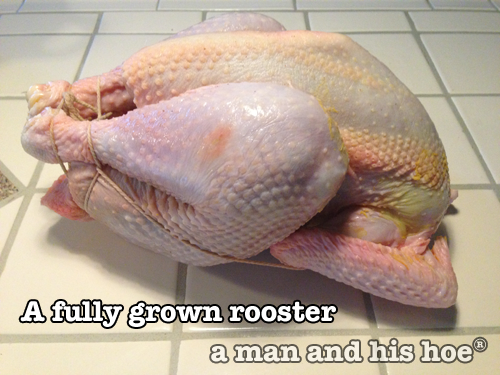
Trussed rooster A fully grown rooster is quite impressive when it is trussed and ready to be roasted. Like all chickens which forage for food and walk long distances every day, most of the meat is on the legs and thighs. The redness of the legs and thighs shows through the firm skin.
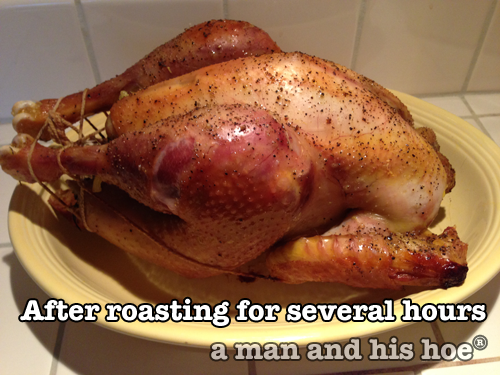
A roasted rooster And roasted, the deep color of the leg and thigh meat is even more evident.
A rooster like this is slow food at its best. Not only do you have to let a rooster grow nearly an entire year, once butchered, you need to let it age in the refrigerator for at least a week before you roast it or pressure cook it, another great way to prepare fully grown rooster.

Rooster breast meat If you would like to try one of these magnificent birds, call or text me at 360-202-0386, or send an email to theman@amanandhishoe.com. Be advised, that these fully grown roosts are not available all the time, however you are always welcome to get your name on the waiting list for them.

Fully grown rooster -
How to Purchase a Chicken
To purchase a chicken, call or text me at 360-202-0386, or send an email to theman@amanandhishoe.com.
Chickens cost $15 a pound. Chickens weigh from just under 3 pounds to up to 4+ pounds, so count on spending from $40 to $60 per chicken.
When ordering, let me know if you want the neck, legs, livers, gizzard, heart, or extra fat.
The Special Poultry permit I have from the State of Washington only lets me sell whole chicken from my place. You will need to come here to pick up your chicken.
By law, I can not butcher your chicken more than 48 hours before you arrive. I also need to chill the chicken to 45 degrees before I can hand them to you. Since it takes 30 minutes to process a chicken and about 90 minutes to chill a chicken to 45 degrees, I need at least two hours to get a chicken ready for you. If you want to pick up chicken in the afternoon, I will process them that morning. If you want to pick up chicken in the morning, I will most likely process them the night before.
These chickens roast the best if you let them age two to three days before roasting. If you are wanting a chicken for Sunday dinner, pick it up Wednesday or Thursday.
-
What My Butchering Process is Like
I butcher my chickens one at a time. When you purchase one of my chickens, it has been butchered as if it was the only chicken in the world. Unlike chicken you buy in a supermarket or even from most farmers markets, my chickens never see another chicken being butchered, they never share the hot water other chickens are dunked in, they never share the ice water other chickens are chilled in. They are not bleached like many commercial chicken. Each of my chickens is processed individually. Before and after each chicken is processed, the work area is disinfected. They are too precious to be treated with less respect.
Here is a description of how a chicken you purchase from me is processed. I have nothing to hide.
Using a piece of netting, I gently herd the chicken into an enclosed pen so that none of the other chickens see me catching the chicken. Once I have the chicken, I immediately cover it with a towel so that it can’t see. Once a chicken can’t see, it becomes very calm.
In the dedicated kitchen I use to process my chickens, I put the chicken in a killing cone and gently pull the head out the bottom of the cone. I make sure to cover the chicken’s head with my hand so that it can’t see a thing.

Hen in killing cone I quickly cut the carotid arteries in the neck. In 30 to 60 seconds the chicken will have bled out and be dead.
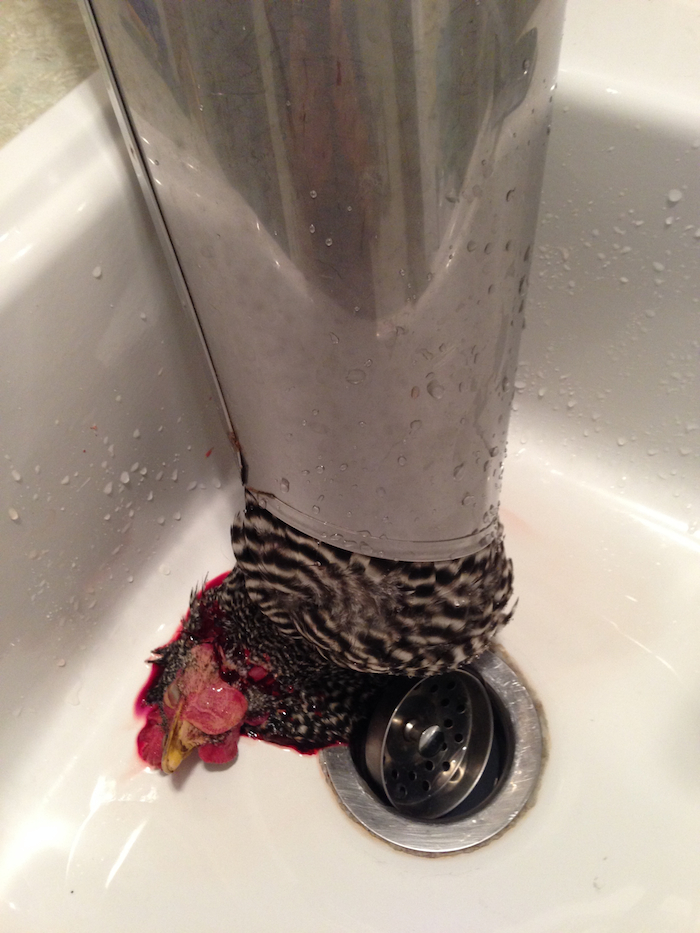
Hen bled out. I pull the chicken out of the killing cone and it is now ready to be processed.
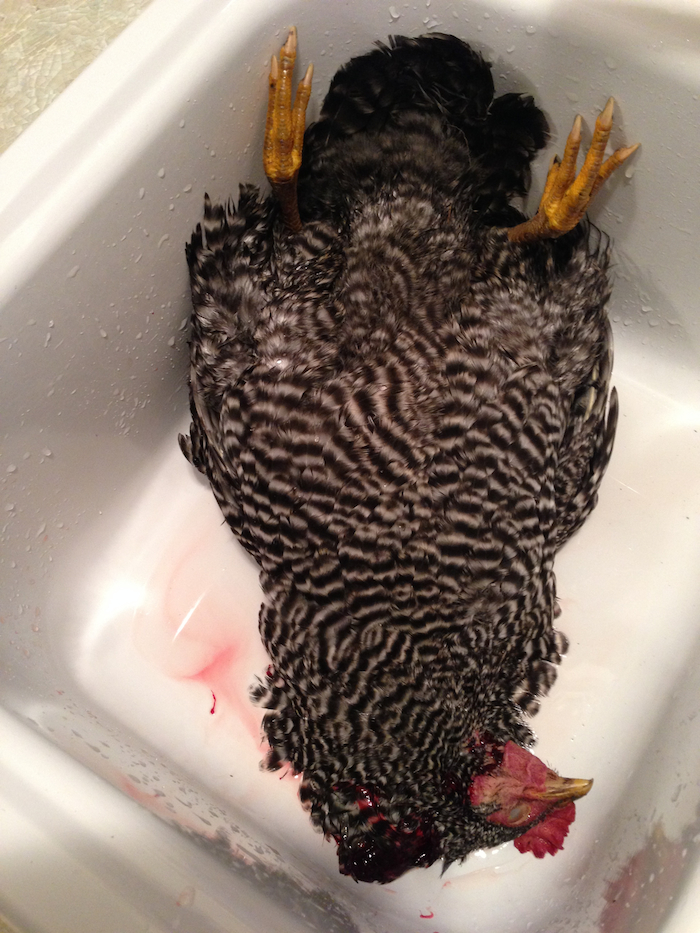
Deceased hen out of the killing cone. The first step is to dunk the chicken in 145 degree water for a minute or two to loosen the feathers. If you prefer, you can request that I dry pluck your chicken instead.

Hen in 145 degree water to loosen her feathers. It takes five to ten minutes to hand pluck a chicken.

Hand plucked hen Once I’ve eviscerated the chicken, I truss it and it is ready to be chilled. The State of Washington requires that I chill the chicken to 45 degrees within 4 hours. Mine chill to that within 2 hours in a freezer. I do not chill them in ice water. Once they are chilled to 45 degrees, they are moved into a refrigerator and kept there until you pick them up. They are never frozen.
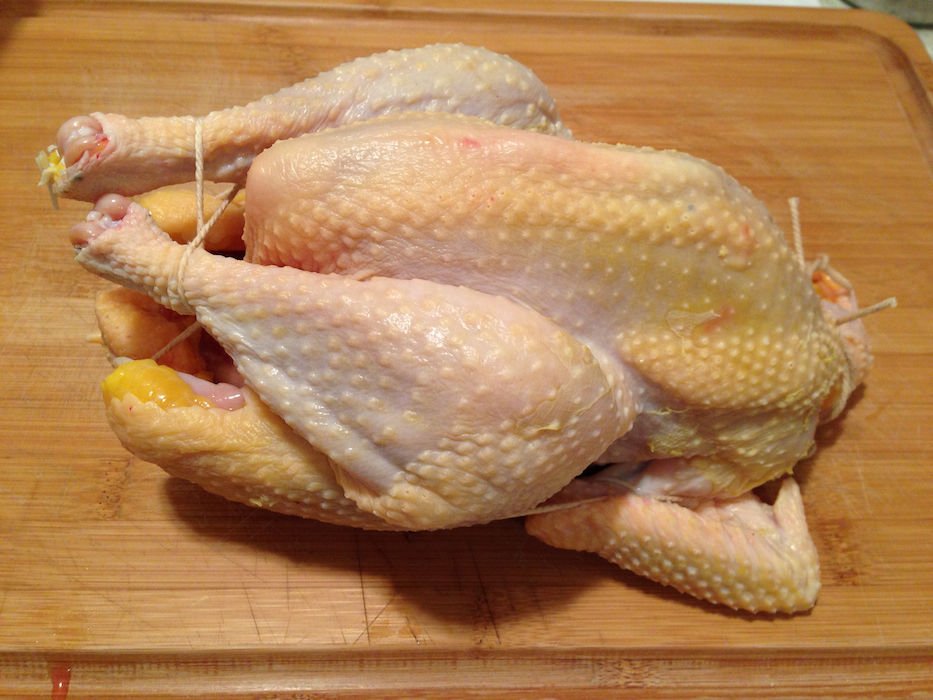
The hen has been eviscerated, cleaned and trussed. These free roaming, grass and bug eating, running/flying chickens have remarkable meat, liver, and gizzards. But their fat is amazing. It is creamy, soft and yellow. You can use it, as is, to fry.
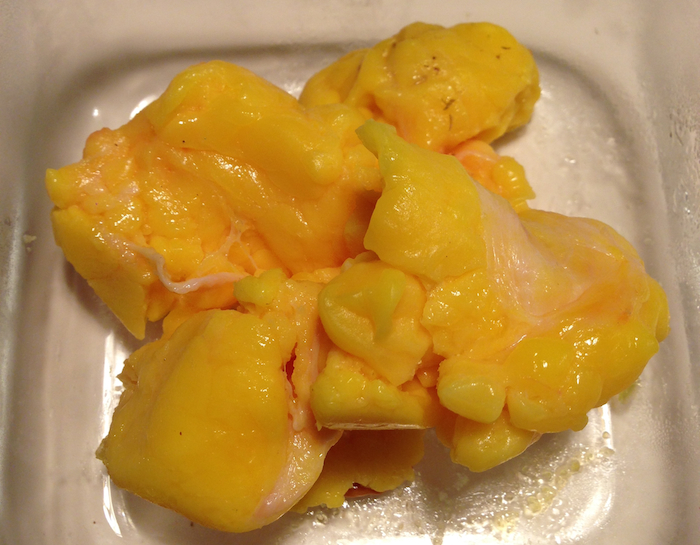
Yellow fat from one of my hens.
